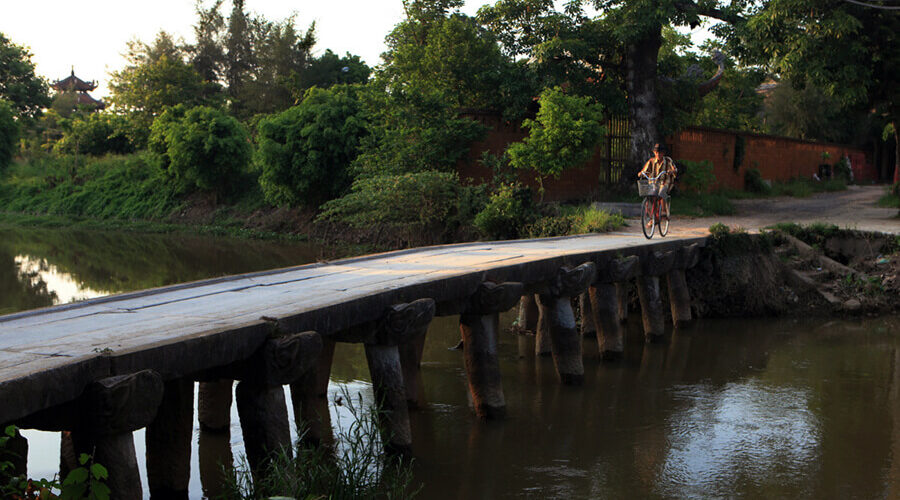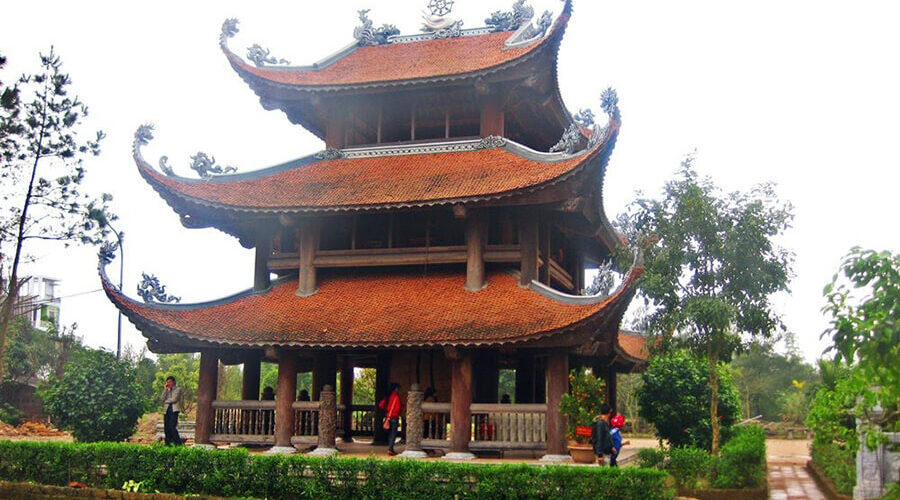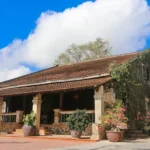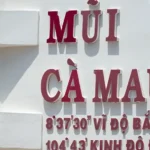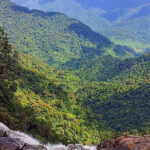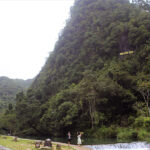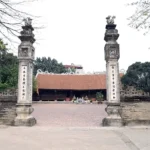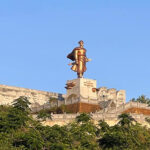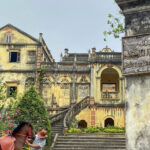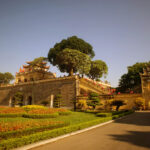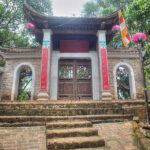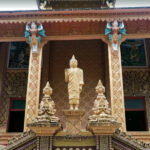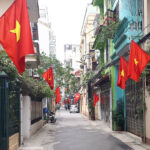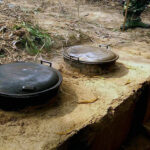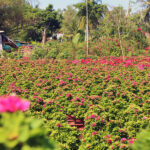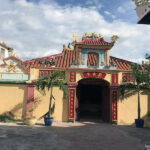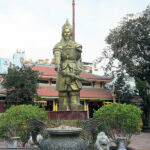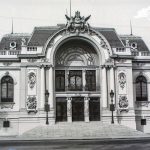Crossing the sunny road, with green rice fields on both sides to reach Nom village, visitors seem to step into a peaceful, ancient space of several hundred years ago. Coming to Nom village, visitors are immersed in a complex of ancient relics including the village gate, well, communal house yard, banyan tree, Nom pagoda, ancient houses….typical of Northern villages.
One of the oldest northern villages in Vietnam
About 30 km east of Hanoi, Nom village – an ancient village in Van Lam district, Hung Yen still retains its ancient beauty. The imposing village gate, built more than 200 years ago with four square axes carved with many sophisticated motifs. Behind the gate, Nom village appears exactly as people imagine an ancient Vietnamese village.

In the past, the villagers had a scrap metal business. Local people bought scrap metal to sell to local bronze foundries and neighboring areas. Thanks to their hard work, diligence, and creativity in business, Nom village has become increasingly prosperous, creating conditions for cultural activities to develop. The rare remaining red brick roads and ancient house gates interspersed with rows of brick walls leading to the alleys of the village, make many people nostalgic.

What impresses Nom village is the rustic, simple, and sincere rural lifestyle. All are still maintained almost intact and are little affected by the “tornado” of urbanization.

On both sides of the lake, on the way to the village, are straight areca trees in front of ancient houses and family temples with architectural features reflected on the water surface.
Nom bridge leads to the pagoda of the same name across Cai River. This is the only remaining stone bridge across the river in Hung Yen. The bridge is about 2m wide with 9 spans, the top of the horizontal support column is decorated with cloud patterns and has become a part of the soul of the village.

A stone bridge in Nom village.
Passing through the 9 spans of the stone bridge is the road leading to Nom market. The market meets 12 times a month on days ending in 1, 4, 6 and 9. In the past, Nom market was one of the places that regulated the life of the whole village with the famous copper craft. Unlike the market in the city, Nom market met inside houses built of unplastered bricks. The red brick color, covered with yin-yang tiled roof, broken over time, is like something very nostalgic.

Nom Pagoda, very famous; located next to Nom Market. Nom Pagoda belongs to the Lam Te Zen sect. No one knows the exact date of the pagoda’s founding. However, on the two large steles still preserved here, the pagoda was rebuilt in 1680 and restored many times after that. The pagoda was formerly a famous pagoda of Hung Yen. According to legend, Nom Pagoda was built in the middle of an ancient pine forest. Perhaps that is why the pagoda is also called “Linh thong co tu” (Ancient pagoda in pine forest).

Nom Pagoda has a traditional architecture. The most special thing is the pagoda still preserves more than 100 ancient terracotta statues. Through many historical upheavals, horrible and long-lasting floods, these statues have “survived” the test of time and retained their original beauty.

Typical relics at pagodas and communal houses still preserve many valuable artifacts such as Buddha statues, stone incense trees, stone towers, bronze bells, wooden incense altars, parallel sentences, royal plaques, palanquins, etc.
Through many historical events, the Nom communal house still retains its ancient features with a Tam-shaped design, facing the village pond, with five main worship rooms in the front, followed by three main rooms, with the left and right wings connecting to each other, and finally the back palace – where the tablet of the Saint Tam Giang – the village’s tutelary god is worshiped, with typical interior designs.

The back of the communal house is only open during the village festival (held from January 10-12, ending at noon on the 12th) or Tet holiday (Lunar New Year).
With the above values, on January 7, 2020, the Ministry of Culture, Sports and Tourism ranked the Nom Village Relic Complex, Dai Dong Commune, Van Lam District, Hung Yen Province as a National Historical-Architectural Relic.
Source: collected by An
Follow us for the best deal with Vietnam package tours and visa services!






